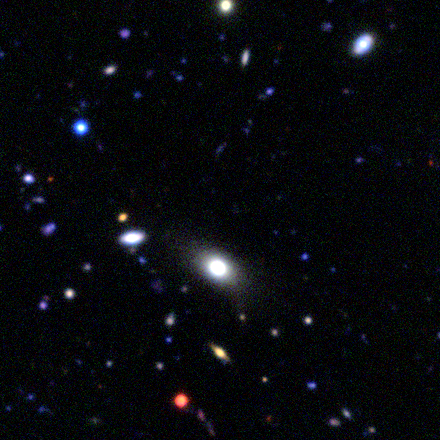Is there a short tutorial on buried rings?
-
 by
lodilady
by
lodilady
I'd love to have a short tutorial on buried rings..is there one somewhere? I think I'm identifying too many of them, so I need to sharpen up what I'm looking for.
Posted
-
 by
Budgieye
moderator
by
Budgieye
moderator
No short tutorial, but look at Phil Marshall's thread on the Science Board.
It doesn't help that many stars and galaxy nuclei also have a ring of overexposure around them.
We are pushing back the limits of knowledge here, and sometimes there are only a few good examples.
Posted
-
 by
Budgieye
moderator
by
Budgieye
moderator
I suppose this one in the nicest I've seen.

http://talk.spacewarps.org/#/subjects/ASW0003g3g
Funny blue ring around nucleus at 1 o'clock. It might be an artifact of a bright nucleus.
Posted
-
 by
lodilady
by
lodilady
Yeah, that's what I'd like...thanks. Some pictures of possibles and nos. Thanks! I'd love more.
Posted
-
 by
Budgieye
moderator
by
Budgieye
moderator

Lens candidate SA110http://kicp.uchicago.edu/~anupreeta/sarcs_sample
Posted
-
 by
shocko61
by
shocko61
Hi Buggieye , I Have a site that the citizen scientists may be interested to see It is Hubblesite.org and one image is labeled SOSSJ 004+4112 Qintuple Qasar it is a very good example of Multiple lenses .Ian shocko61
Posted
-
 by
lodilady
by
lodilady
Found it on Hubblesite.org. Awe-inspiring! Thanks.
http://hubblesite.org/newscenter/archive/releases/2006/23/image/a/format/large_web/
from the site:
A gravitational lens will always produce an odd number of lensed images, but one image is usually very weak and embedded deep within the light of the lensing object itself. Though previous observations of SDSS J1004+4112 have revealed four of the images of this system, Hubble's sharp vision and the high magnification of this gravitational lens combine to place a fifth image far enough from the core of the central imaging galaxy to make it visible as well.The galaxy hosting the background quasar is at a distance of 10 billion light-years. The quasar host galaxy can be seen in the image as multiple faint red arcs. This is the most highly magnified quasar host galaxy ever seen.
Posted